Related Research Articles

DAF Trucks is a Dutch truck manufacturing company and a division of Paccar. DAF originally stood for van Doorne's Aanhangwagen Fabriek. Its headquarters and main plant are in Eindhoven. Cabs and axle assemblies are produced at its Westerlo plant in Belgium. Some of the truck models sold with the DAF brand are designed and built by Leyland Trucks at its Leyland plant in the United Kingdom.

Commer was a British manufacturer of commercial and military vehicles from 1905 until 1979. Commer vehicles included car-derived vans, light vans, medium to heavy commercial trucks, and buses. The company also designed and built some of its own diesel engines for its heavy commercial vehicles.
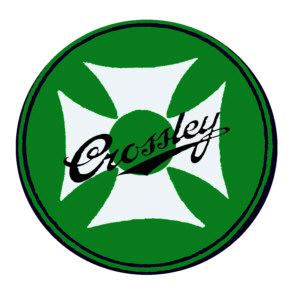
Crossley Motors was an English motor vehicle manufacturer based in Manchester, England. It produced approximately 19,000 cars from 1904 until 1938, 5,500 buses from 1926 until 1958, and 21,000 goods and military vehicles from 1914 to 1945.
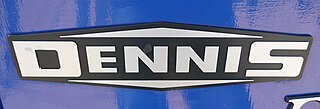
Dennis Specialist Vehicles was an English manufacturer of commercial vehicles based in Guildford, building buses, fire engines, lorries (trucks) and municipal vehicles such as dustcarts. All vehicles were made to order to the customer's requirements and more strongly built than mass production equivalents. For most of the 20th century the Dennis company was Guildford's main employer.

Alldays & Onions was an English engineering business and an early automobile manufacturer based at Great Western Works and Matchless Works, Small Heath, Birmingham. It manufactured cars from 1898 to 1918. The cars were sold under the Alldays & Onions name. Alldays also built an early British built tractor, the Alldays General Purpose Tractor. After the First World War the cars were sold under the name Enfield Alldays. Car production seems to have ceased in the 1920s but the manufacture of many other items continued. The company became part of the Mitchell Cotts Group.

Wolseley Motors Limited was a British motor vehicle manufacturer founded in early 1901 by the Vickers Armaments in conjunction with Herbert Austin. It initially made a full range, topped by large luxury cars, and dominated the market in the Edwardian era. The Vickers brothers died and, without their guidance, Wolseley expanded rapidly after the war, manufacturing 12,000 cars in 1921, and remained the biggest motor manufacturer in Britain.

Seddon Atkinson Vehicles Limited, a manufacturer of large goods vehicles based in Oldham, Greater Manchester, England, was formed after the acquisition in 1970 of Atkinson Vehicles Limited of Preston by Seddon Diesel Vehicles Limited of Oldham. In 1974, the firm was acquired by International Harvester, which sold it in March 1984 to the Spanish group Enasa which made it a subsidiary of Pegaso. In 1990, it became part of Iveco which used the brand for various types of specialised vehicles in the United Kingdom. The range of models produced included EuroMover, Pacer and Strato, which are aimed at refuse collection, recycling and construction operators.

Thornycroft was an English vehicle manufacturer which built coaches, buses, and trucks from 1896 until 1977.
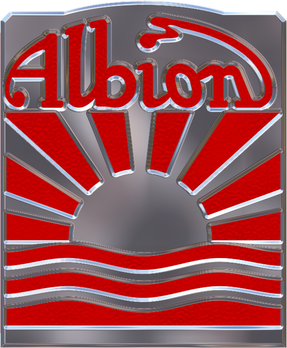
Albion Motors was a Scottish automobile and commercial vehicle manufacturer.

The Vulcan Motor and Engineering Company Limited, of Southport, England, made cars from 1902 until 1928 and commercial vehicles from 1914 until 1953.

Guy Motors was a Wolverhampton-based vehicle manufacturer that produced cars, lorries, buses and trolleybuses. The company was founded by Sydney S. Guy (1885–1971) who was born in Kings Heath, Birmingham. Guy Motors operated out of its Fallings Park factory from 1914 to 1982, playing an important role in the development of the British motor industry.

The Rolls-Royce Silver Ghost name refers both to a car model and one specific car from that series. Originally named the "40/50 h.p." the chassis was first made at Royce's Manchester works, with production moving to Derby in July 1908, and also, between 1921 and 1926, in Springfield, Massachusetts. Chassis no. 60551, registered AX 201, was the car that was originally given the name "Silver Ghost". Other 40/50 hp cars were also given names, but the Silver Ghost title was taken up by the press, and soon all 40/50s were called by the name, a fact not officially recognised by Rolls-Royce until 1925, when the Phantom range was launched.

Bristol Commercial Vehicles was a vehicle manufacturer located in Bristol, England. Most production was of buses but trucks and railbus chassis were also built.

Straker-Squire was a British automobile manufacturer based in Bristol, and later Edmonton in North London.

The Maudslay Motor Company was a British vehicle maker based in Coventry. It was founded in 1901 and continued until 1948 when it was taken over by the Associated Equipment Company (AEC) and along with Crossley Motors the new group was renamed Associated Commercial Vehicles (ACV) Ltd.

The "bullnose" Morris Oxford is a series of motor car models produced by Morris of the United Kingdom, from 1913 to 1926. It was named by W R Morris after the city in which he grew up and which his cars were to industrialise.
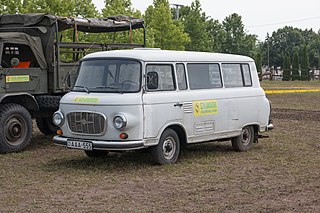
The Barkas B 1000 is a forward control panel van made by the East German manufacturer VEB Barkas-Werke in Chemnitz. It was made in several different body styles: as a panel van, minibus seating eight, and pickup truck. Special-purpose vehicles based on the Barkas B 1000 were made as well. In June 1961, the production of the four-door panel van commenced, with the minibus following in spring 1964, and the pickup truck in spring 1965. With its payload of 1,000 kg, and its spacious interior, the Barkas B 1000 proved to be very durable and reliable. During its 27-year production period, it received some minor updates in 1963 and 1972, but all efforts to develop a successor failed, and there were no major design alterations for the remainder of its production. The successor Barkas B 1000-1, introduced in autumn 1989, carried over the technical design, but it was fitted with a different engine. In 1990, manufacture was sold to a Russian company, but production never was restarted.
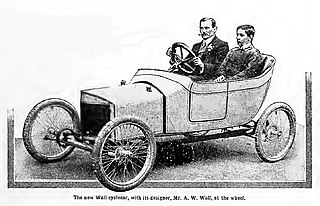
Arthur William Wall was an engineer in the field of motorised transport and inventor of the self-powered wheel in England in the early 20th century. He is best known for his creation of the self-powered wheel, the Wall Autowheel, which could be used to power a bicycle, but he was also the man behind Roc motorcycles and a tricar and four-wheel cyclecar. His main company was A. W. Wall Ltd, but he created several other companies to compartmentalise his different activities, such as the Roc Gear Co, who supplied epicyclic gears to a significant number of manufacturers before WW1.
J. Tylor and Sons Limited of London was a company with a background in sanitation that moved into petrol engine manufacture in the 1900s. Its engines were of medium sized and found application in buses, lifeboats and First World War military vehicles.
The Turner Manufacturing Company was an engineering company based in Wolverhampton, England. Among their products were steam and petrol cars, small boat engines, the Turner winch, a range of diesel engines made in the 1940s and 1950s, the Yeoman of England agricultural tractor, and truck transmissions - the latter leading to their eventual takeover.
References
- ↑ "Palladium Cars (advert)". Perthshire Advertiser. 15 November 1911. p. 2.
- ↑ "Palladium (advert)". The Scotsman. 19 October 1912. p. 16.
- ↑ "Palladium (advert)". Dundee Courier. 11 June 1914. p. 3.
- ↑ GB 135980,Baxter, Donald John William,"Improvements in or relating to Air Cooling Systems for Internal Combustion Engines",published 1919-12-11, assigned to Palladium Autocars Ltd.
- ↑ "Scottish Motor Show". The Courier. 31 January 1923. p. 6.
- ↑ "Representative Goods-carrying Models". The Commercial Motor. January 1914. p. 30.
- ↑ "The Palladium 15cwt Van under Test". The Commercial Motor. 15 October 1914. p. 123.
- ↑ "British Vehicles at Olympia". The Commercial Motor. 12 October 1920. p. 266.